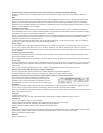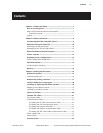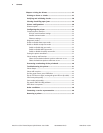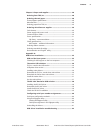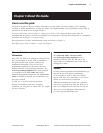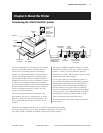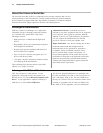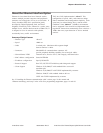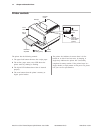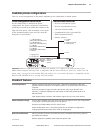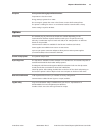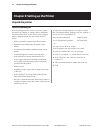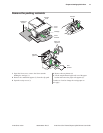
Chapter 2: About the Printer10
A760 Two-Color Thermal/Impact Hybrid Printer: User Guide 189-9200303 Rev. D A760-D100 10/04
About the Universal Serial Bus
The Universal Serial Bus (USB) is a peripheral bus for personal computers that was first
released in January 1996. Since that time, virtually all Intel Architecture personal computers
have the hardware to support USB, and a large number of computers exist that have both the
hardware and software support required to interface with USB peripherals.
Advantages of USB connections
USB has a number of advantages over Application
Compatible Escape Commands connection schemes
(e.g., serial RS-232C, parallel IEEE 1284). These
advantages include:
• High Speed: up to 12 MB/second for high-speed
devices.
• Plug and Play: Devices are automatically recognized
and configured at installation.
• Hot plug: Bus supports installation and removal of
devices with the power applied.
• Up to 127 devices: One host can support up to 127
devices with the use of hubs.
• “Free ports”: Most PC architecture machines contain
two USB ports in the base hardware.
These advantages have become attractive to the POS
industry for a couple of reasons.
Additional POS devices. Some POS systems are
required to host more peripherals than can be supported
by two RS-232C ports typical in a platform. With the
addition of one (or two) USB connectors, the platform
can now support the additional devices that had
previously required a serial port expander card.
Higher bandwidths. New devices coming into use have
bandwidth requirements that are higher than the
bandwidth that can be supported on Application
Compatible Escape Commands interfaces. These
devices include image scanners and printers. As
the speed and capability of POS printers increases, the
performance of the printer in an application can become
limited by the speed of the communications interface.
USB provides ample bandwidth to support current and
future POS printer requirements.
Advantages of the TPG, Inc. USB solution
TPG, Inc. provides two USB solutions. If your
application is designed to talk to the printer as an
RS-232C device, we offer an RS-232C Emulation USB
Driver. If your application is capable of talking to a
USB device, we offer a Native USB Driver.
The RS-232C Emulation USB driver is compatible with
PCs that run Windows 95 (OSR 2.1 and up), 98, Me, NT
(SP 3 and higher), 2000, or XP. The native USB driver
(having two versions- TPG, Inc. solution or Printer Class
solution) is compatible with PCs that run Windows 98,
Me, 2000, or XP. See Appendix A for more information.



